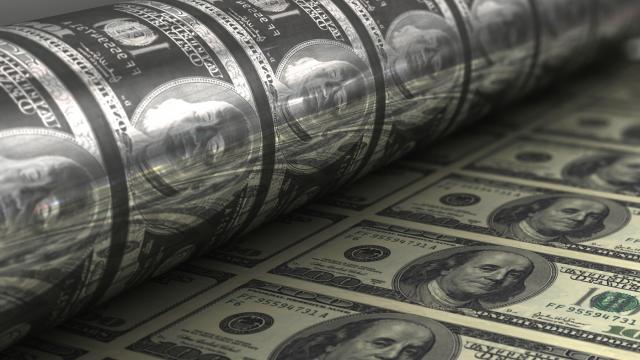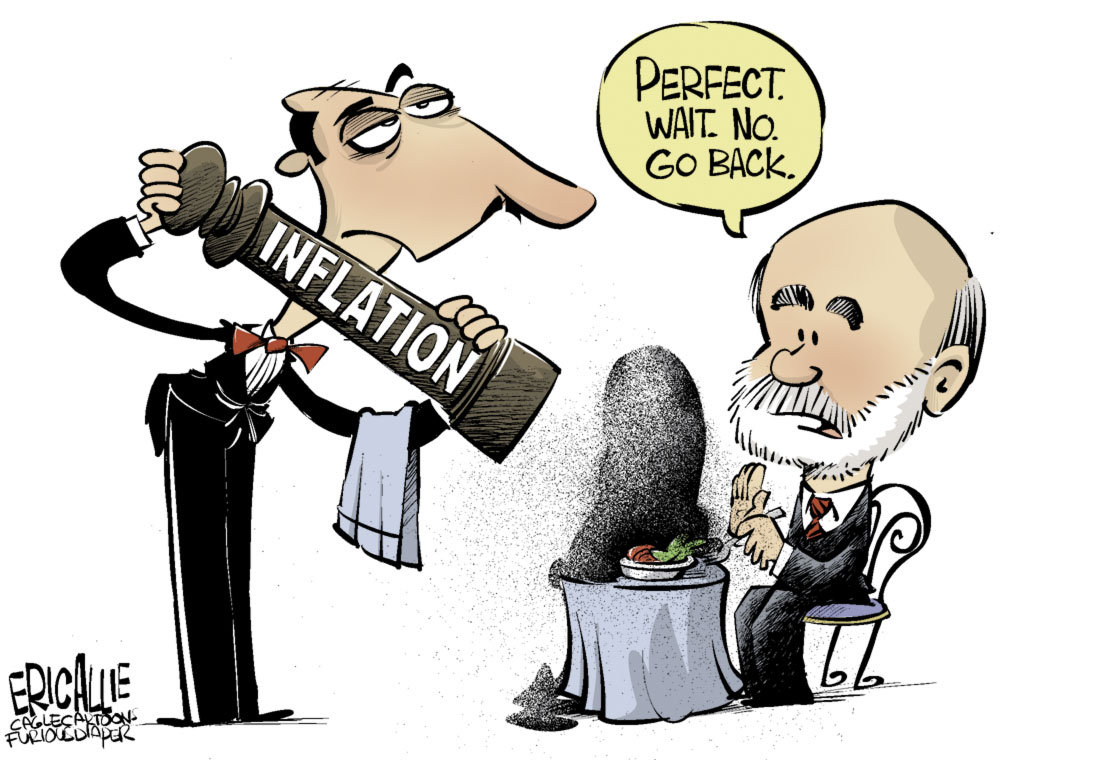
Rather than expanding the money supply, quantitative easing has actually caused it to shrink by sucking up the collateral needed by the shadow banking system to create credit. But that does not mean QE should be replaced with austerity, as recommended by the BIS. Rather, it could be directed into the real, producing economy, which still needs a good infusion of money to stimulate demand.
The effect of Ben Bernanke’s May 29th speech signaling the beginning of the end of QE3 was to wipe about $3 trillion from global equity markets. The Fed Chairman said the central bank may moderate its pace of asset purchases, in which it has been buying $85 billion in US Treasuries and mortgage-backed securities per month; and that if the economy continues to improve, it may stop the third round of quantitative easing altogether by mid-2014.
Commentators called the violent market reaction a “taper tantrum.” One analyst wrote, “As the parent of a one-year-old I am familiar with such things. When something is taken away from the one-year-old, she more often than not throws a tantrum — even if the thing taken away was of no consequence.”
Bernanke than played the indulgent parent and went into damage control mode, assuring investors that the Fed would “continue to implement highly accommodative monetary policy” (meaning interest rates would not change) and that tapering was contingent on conditions that look unlikely this year. The only thing now likely to be tapered in 2013 is the Fed’s growth forecast.
It is a neoliberal maxim that “the market is always right,” but as former World Bank chief economist Joseph Stiglitz showed, the maxim only holds when the market has perfect information. The market seems to be deluded about QE, what it achieves, and what harm can it do.
Unintended Consequences
The popular perception is that QE stimulates the economy by increasing bank reserves, which increase the money supply through a multiplier effect. But as shown earlier here, QE is just an asset swap – assets for cash reserves that never leave bank balance sheets. As University of Chicago Professor John Cochrane put it in a May 23rd blog:
"QE is just a huge open market operation. The Fed buys Treasury securities and issues bank reserves instead. Why does this do anything? Why isn't this like trading some red M&Ms for some green M&Ms and expecting it to affect your weight? . . . [W]e have $3 trillion or so [in] bank reserves. Bank reserves can only be used by banks, so they don't do much good for the rest of us."
The reserves may not do much, but the Treasuries they replaced, it seems, are in high demand. Cochrane discusses a May 23rd Wall Street Journal article by Andy Kessler titled “The Fed Squeezes the Shadow-Banking System,” in which Kessler argued that QE3 has backfired. Rather than stimulating the economy by expanding the money supply, it has contracted the money supply by removing the collateral needed by the shadow banking system, which now supplies about half the credit available to the economy.
Kessler wrote:
"[T]he Federal Reserve's policy—to stimulate lending and the economy by buying Treasurys—is creating a shortage of safe collateral, the very thing needed to create credit in the shadow banking system for the private economy. The quantitative easing policy appears self-defeating, perversely keeping economic growth slower and jobs scarcer."
That explains what he calls the great economic paradox of our time:
"Despite the Federal Reserve's vast, 4½-year program of quantitative easing, the economy is still weak, with unemployment still high and labor-force participation down. And with all the money pumped into the economy, why is there no runaway inflation? . . . "The explanation lies in the distortion that Federal Reserve policy has inflicted on something most Americans have never heard of: 'repos,' or repurchase agreements, which are part of the equally mysterious but vital 'shadow banking system.' "The way money and credit are created in the economy has changed over the past 30 years. Throw away your textbook."
Fractional Reserve Lending Without the Reserves
The post-textbook form of money creation to which Kessler referred was explained in a July 2012 article by IMF researcher Manmohan Singh titled “The (Other) Deleveraging: What Economists Need to Know About the Modern Money Creation Process.” He wrote:
"In the simple textbook view, savers deposit their money with banks and banks make loans to investors . . . . The textbook view, however, is no longer a sufficient description of the credit creation process. A great deal of credit is created through so-called 'collateral chains.' "We start from two principles: credit creation is money creation, and short-term credit is generally extended by private agents against collateral. Money creation and collateral are thus joined at the hip, so to speak. In the traditional money creation process, collateral consists of central bank reserves; in the modern private money creation process, collateral is in the eye of the beholder."
Like the reserves in conventional fractional reserve lending, collateral can be re-used (or rehypothecated) several times over:
"[C]ollateral that backs one loan can in turn be used as collateral against further loans, so the same underlying asset ends up as securing loans worth multiples of its value. Of course the re-pledging cannot go on forever, as haircuts [the percentage devaluation at which the asset trades] progressively reduce the credit-raising potential of the underlying asset, but ultimately, several lenders are counting on the underlying assets as backup in case things go wrong."
Singh gives the example of a U.S. Treasury bond used by a hedge fund to get financing from Goldman Sachs. The same collateral is used by Goldman to pay Credit Suisse on a derivative position. Then Credit Suisse passes the US Treasury bond to a money market fund that will hold it for a short time or until maturity.
Singh states that at the end of 2007, about $3.4 trillion in “primary source” collateral was turned into about $10 trillion in pledged collateral – a multiplier of about three. By comparison, the US M2 money supply (the credit-money created by banks via fractional reserve lending) was only about $7 trillion in 2007. Thus credit-creation-via-collateral-chains is a major source of credit in today’s financial system.
Exiting Without Panicking the Markets
The shadow banking system is controversial. It funds derivatives and other speculative ventures that may harm the real, producing economy or put it at greater risk. But the shadow system is also a source of credit for many businesses that would otherwise be priced out of the credit market, and for such things as credit cards that we have come to rely on. Moreover, whether we approve of the shadow system or not, depriving it of collateral could create mayhem in the markets. According to the Treasury Borrowing Advisory Committee of the Securities and Financial Markets Association, the shadow system could be short as much as $11.2 trillion in collateral under stressed market conditions. That means that if every collateral claimant tried to grab its collateral in a Lehman-like run, the whole fragile Ponzi scheme could collapse.
That alone is reason for the Fed to prevent “taper tantrums” and keep the market pacified. But the Fed is under pressure from the Swiss-based Bank for International Settlements, which has been admonishing central banks to back off from their asset-buying ventures. The BIS said in its annual report in June:
"Central banks cannot do more without compounding the risks they have already created. . . . [They must] encourage needed adjustments rather than retard them with near-zero interest rates and purchases of ever-larger quantities of government securities. . . . "Delivering further extraordinary monetary stimulus is becoming increasingly perilous, as the balance between its benefits and costs is shifting. "Monetary stimulus alone cannot provide the answer because the roots of the problem are not monetary. Hence, central banks must manage a return to their stabilization role, allowing others to do the hard but essential work of adjustment."
“Adjustment” evidently means “structural adjustment” – imposing austerity measures on the people in order to balance federal budgets and pay off national debts.
The BIS concludes from the failure of QE that the roots of the problem are not monetary, but the flaw may not be in the theory but in the execution of QE. The money has not gotten into the real economy but has gotten trapped on bank balance sheets. Businesses still need “demand” before they can hire, which means they need customers with money to spend; and that money is not available today. A true Bernanke-style helicopter drop, raining money down on the people, has yet to be tried.
The Fed could avoid collateral damage to the shadow banking system without curtailing its quantitative easing program by taking the novel approach of directing its QE fire hose into the real market. One possibility would be to buy up $1 trillion in student debt and refinance it at 0.75%, the interest rate the Fed gives to banks. A similar solution to the student debt problem was proposed by Elizabeth Warren in her student loan bill, which has received a groundswell of support, including from many colleges and universities.
Another alternative would be to make loans to state and local governments at 0.75%, something that might have prevented the recent bankruptcy of Detroit, once the nation’s fourth-largest city. Yet another would be to pour QE money into an infrastructure bank that funds New Deal-style rebuilding.
The Federal Reserve Act might have to be modified, but what Congress wrought, it can change. The possibilities are limited only by the imaginations of our Congress people, and by the chokehold imposed by the financial institutions that bankroll them.
3 WAYS TO SHOW YOUR SUPPORT
- Log in to post comments

















